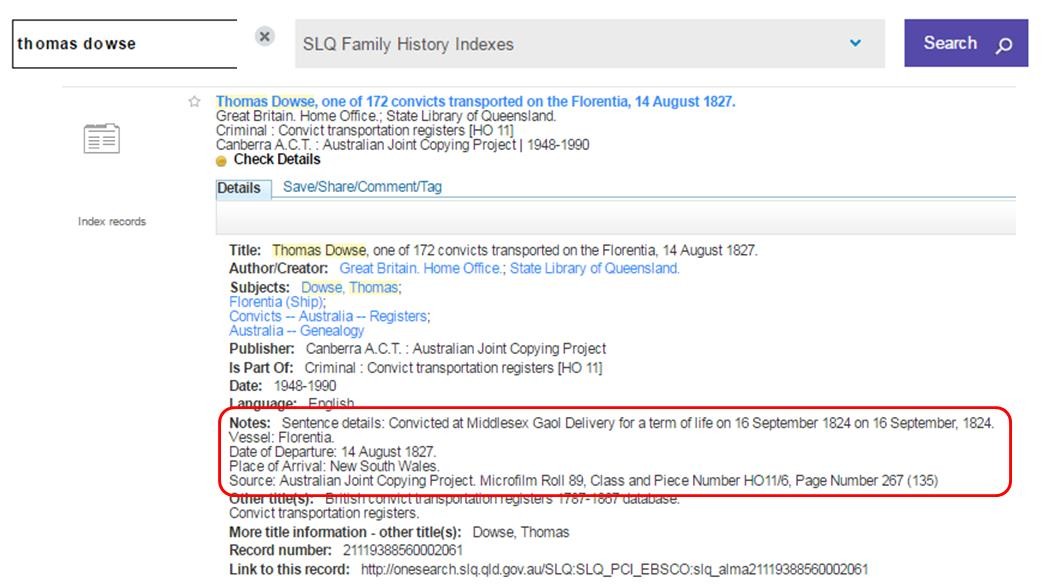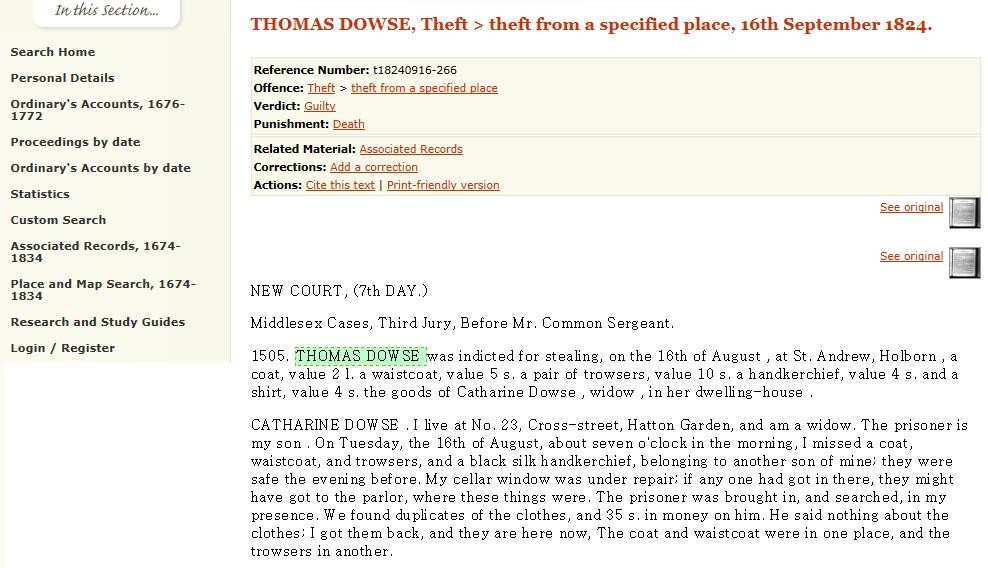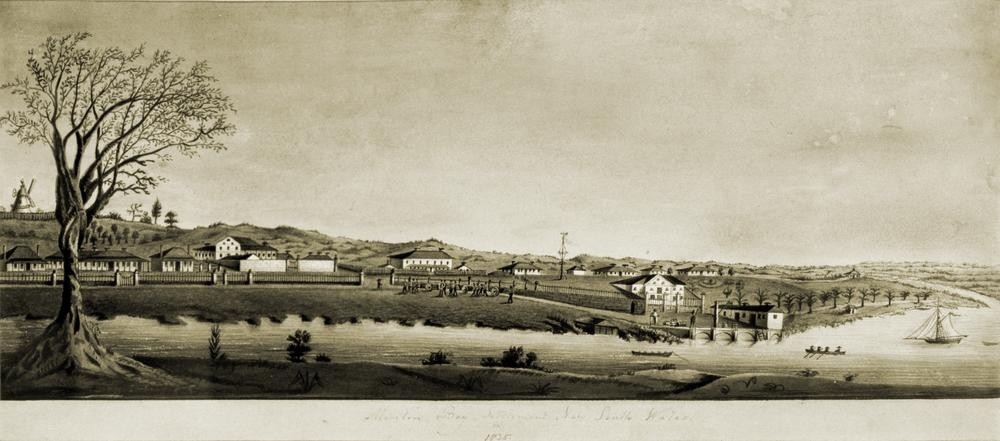Convicts are often a much wanted addition to a family tree, but they are not always easily identifiable. Ancestors who came as convicts often hid their convict past as they became respectable members of society. Some of Queensland’s early pillars of society were convicts. Our Convict Queenslanders page, showcases some of these.
Start by constructing a time line of dates and events; check the birth, death and marriage indexes; and establish the first known event in Australia. Then check the immigration indexes for the various states. No luck, then you may have a convict ancestor.
Convict arrival dates in Australia
| New South Wales (including Qld) | 1788-1842 |
| Moreton Bay (Queensland) | 1849-1850 |
| Tasmania (Van Diemen’s Land) | 1812-1853 |
| Victoria | 1803-1849 |
| Western Australia | 1850-1868 |
Initial sources to check:
- The British Convict Transportation register 1787-1867 database, was created from transportation registers available through the Australian Joint Copying Project (AJCP) microfilm held at State Library of Queensland, and contains details on over 123,000 of the estimated 160,000 sent to Australia. This can be searched through One Search catalogue and selecting SLQ Family History Indexes.

One Search catalogue entry for Thomas Dowse from the "British Convict Transportation Register".
- NSW convict records such as:
- Indents – musters or lists of convicts on transport ships before they disembark. At the beginning of transportation the information was basic such as such as name, date and place of trial; and sentence. As transportation continued the more information became available such as native place, calling, physical description and offence.
- Tickets of leave - permission to work for themselves or others within a specified area.
- Conditional and absolute pardons – often rewards for good behaviour, and involved the cancellation of the sentence. Conditional pardons were given mostly to convicts who were serving a life sentence on the condition they didn’t return to England. Absolute pardons had no restrictions, so the convict could return to England if they desired.
- Certificates of freedom – provided to convicts to show that a convict had served their sentence. Only provided to convicts who had a finite sentence of seven, ten or fourteen years.
The indexes for the above records are available on State Records NSW website, and State Library of Queensland holds these records on microfilm.
- Tasmanian, or Van Diemen’s Land as it was known, records are held by the Tasmanian Archives and Heritage Office. It can be searched via the Tasmanian Names index, and a large number of the records have been digitised and can be viewed for free.
- Western Australian convict records are mainly from the latter stages of transportation to Australia. A database of nearly 10,000 convicts transported to the Swan River Colony between 1850 and 1868 is available through the Freemantle Prison website.
Other sources that can add detail and perspective to a convict’s life:
- Trial proceedings can provide insight into your convict’s life prior to transportation, and provide you with additional information such as crime. Some of these have been digitised and are available online, such as the Proceedings of the Old Bailey, while others may be found on as a part of State Library AJCP Miscellaneous microfilm collection.

Trial proceedings for Thomas Dowse, 16 September 1824, available on The Proceedings of the Old Bailey website.
- Surgeon Superintendent’s journals from the voyages of convict ships, which may provide a glimpse into ship life for convicts, and if you’re lucky you may locate your convict on the sick list. State Library has a number of these on microfilm as a part of the AJCP collection.
- Colonial Secretary’s Correspondence deals with the day to day running of the colony, and can include such things as permissions to marriage, assignment lists, petitions for sentence reduction and much more. There are a number of indexes available both online and on microform at State Library that leads to State Records NSW documents held at the library on microform.
- Newspapers report on crime, trials and punishments; transport arrivals; track the fortunes of individuals beyond their sentence; and provides a social context for their lives. State Library has an extensive collection of newspapers on print and microfilm as well as providing access to British and Irish newspapers through databases.
Sometimes, no matter how hard they tried, convicts found themselves committing crimes within the colony. If they were found guilty, they might be sent to another penal settlement in Australia. Moreton Bay was one such settlement. Established in 1824, Moreton Bay was a penal settlement for re-offenders. State Library holds some records, as do Queensland State Archives.

Some State Library records include:
- Sydney & Darlinghurst goal indexes and records held on microform at State Library.
- Colonial Movements CD indexing offenders' and re-offenders' movements throughout the colony.
- Colonial Secretary’s Correspondence relating specifically to Moreton Bay and Queensland 1822-1860 Index is available online, and original letters are available at State Library on microfilm.
See also our two info guides:
- Convict research: how to trace a convict ancestor
- Convict research: finding out further family history
On Friday 12 August 2016 Kirsten Perris from SLQ and Saadia Thomson-Dwyer from Queensland State Archives will be presenting a session called Researching convict ancestors. For details, and to register, see our What’s on webpage.
Comments
Your email address will not be published.
We welcome relevant, respectful comments.